
Evolution of globular clusters and their stellar populations
I study the evolution of the globular cluster system of the Milky Way trying to understand how the internal and orbital processes, combined to possible cluster-cluster interaction can affect their chemo-dynamical properties.

- I am currently exploring how stellar evolution and the interaction of clusters with the Galactic field can shape current clusters and their multiple stellar populations (in collaboration with Elena Lacchin, a bright PhD student I am supervising on this project).
Update: Elena has successfully obtained her PhD and has moved to Heidelberg. In the meanwhile, our paper has been accepted. In this study, we have demonstrated that initially highly massive globular clusters hosting two distinct stellar populations (the famous multiple populations, with the second one born at the centre of the first population) can shed as much as 98% of their mass, resulting in final masses, density profiles, and half-mass radii in agreement with those observed in Galactic globular clusters. This finding implies that the "mass budget problem" associated with the self-enrichment theories concerning the formation of multiple populations in globular clusters may not pose a challenge, provided certain initial constraints are met: here is the link to the article.
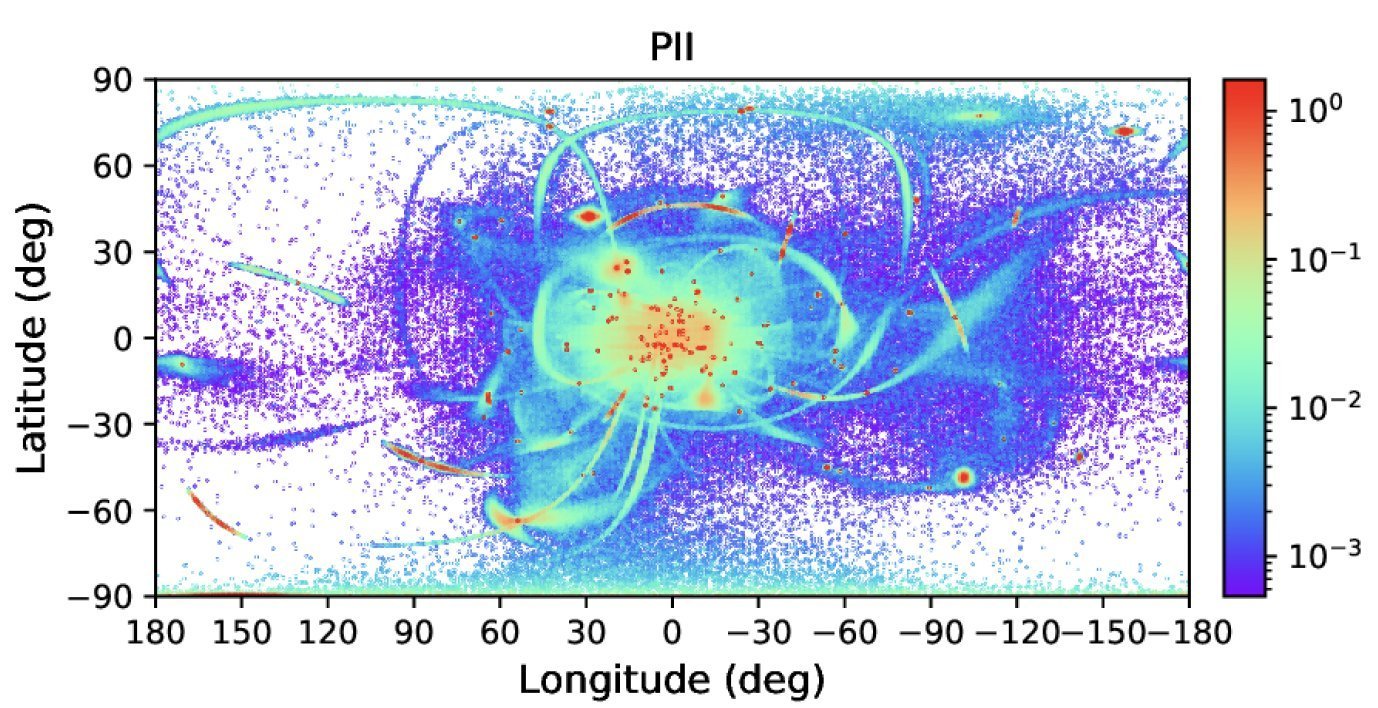
- I am part of the e-Tidal project led by Salvatore Ferrone, PhD student at GEPI. This is a set of about 24,000 simulations exploring tidal streams of all observed Galactic globular clusters in different models for the Milky Way's potential and considering errors on the observed orbital parameters. The outcome of one the simulations is the figure shown on the left. These models have an enormous potential, especially for the search of new stellar streams with current (for example Gaia and SDSS) and future (for example WEAVE, 4MOST, MOONS, ELT) surveys and instruments. The first results of the project are presented here.

- Here is a small selection of my past results:


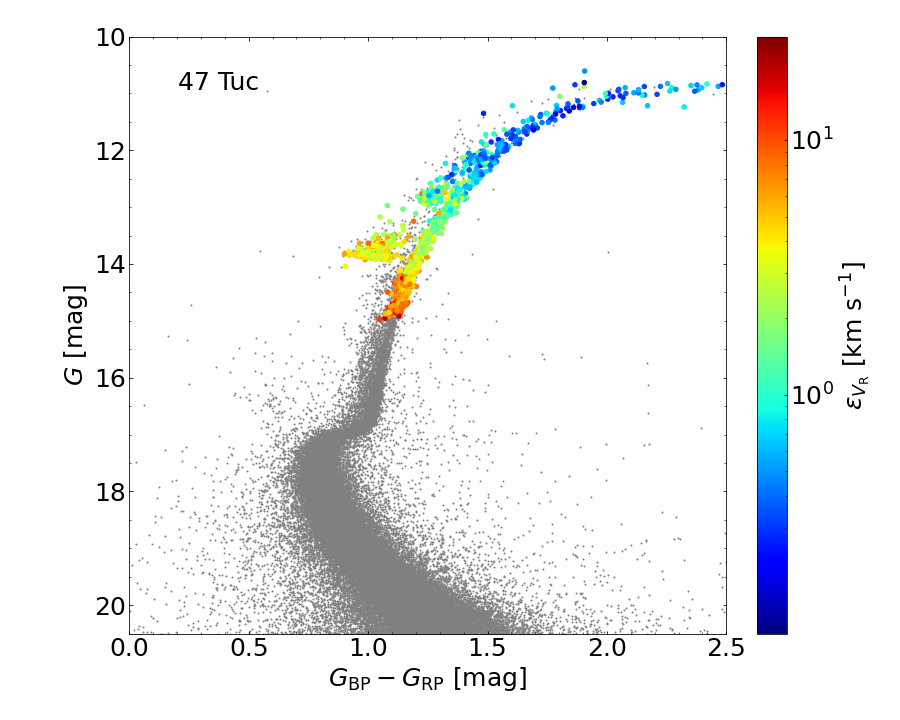
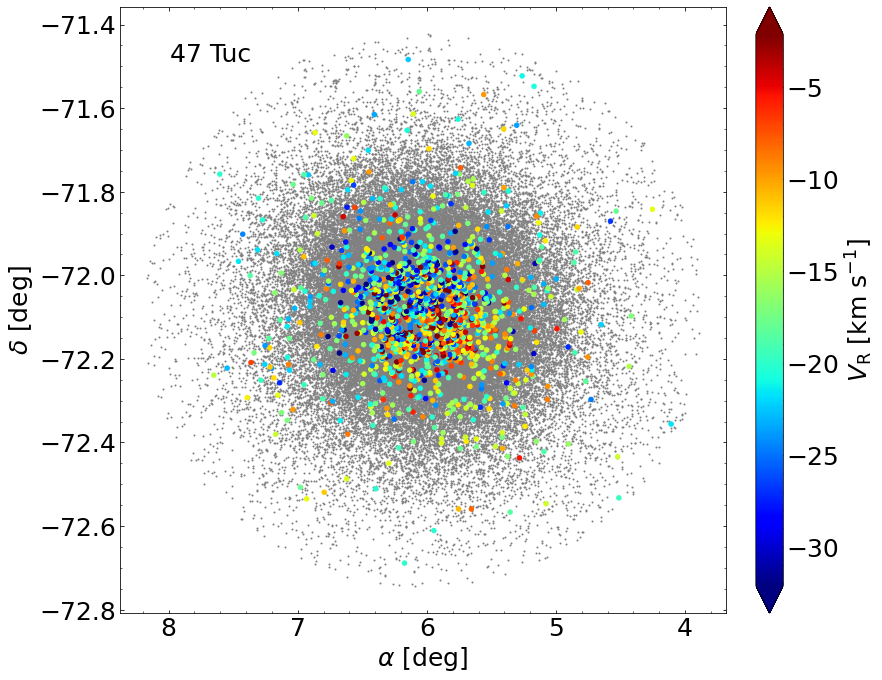
Gaia globular cluster radial velocity validation
I am also part of the ESA Gaia DPAC, within CU6. As such I have been responsible for the validation of all radial velocities for stars in the Galactic globular clusters in Gaia DR3, presented here. This release bears a major improvements in the understanding of globular clusters. This is clear just looking at the number of stars with radial velocities in the 111 GCs in Gaia DR3 (top plot on the left). The color magnitude diagrams for these clusters are simply beatiful, and the uncertainties are stunningly small (as an example I am showing the CMD for 47 Tuc, one of the most massive Galactic globular clusters in middle panel on the left). Even the (small) rotation of this cluster is clearly visible from the Gaia data, showing the potential of the radial velocities provided by this satellite even in dense regions of the Galaxy. Working with the CU6 team and contributing to the validation of the radial velocities in GCs for Gaia DR3 has been really a privilege!
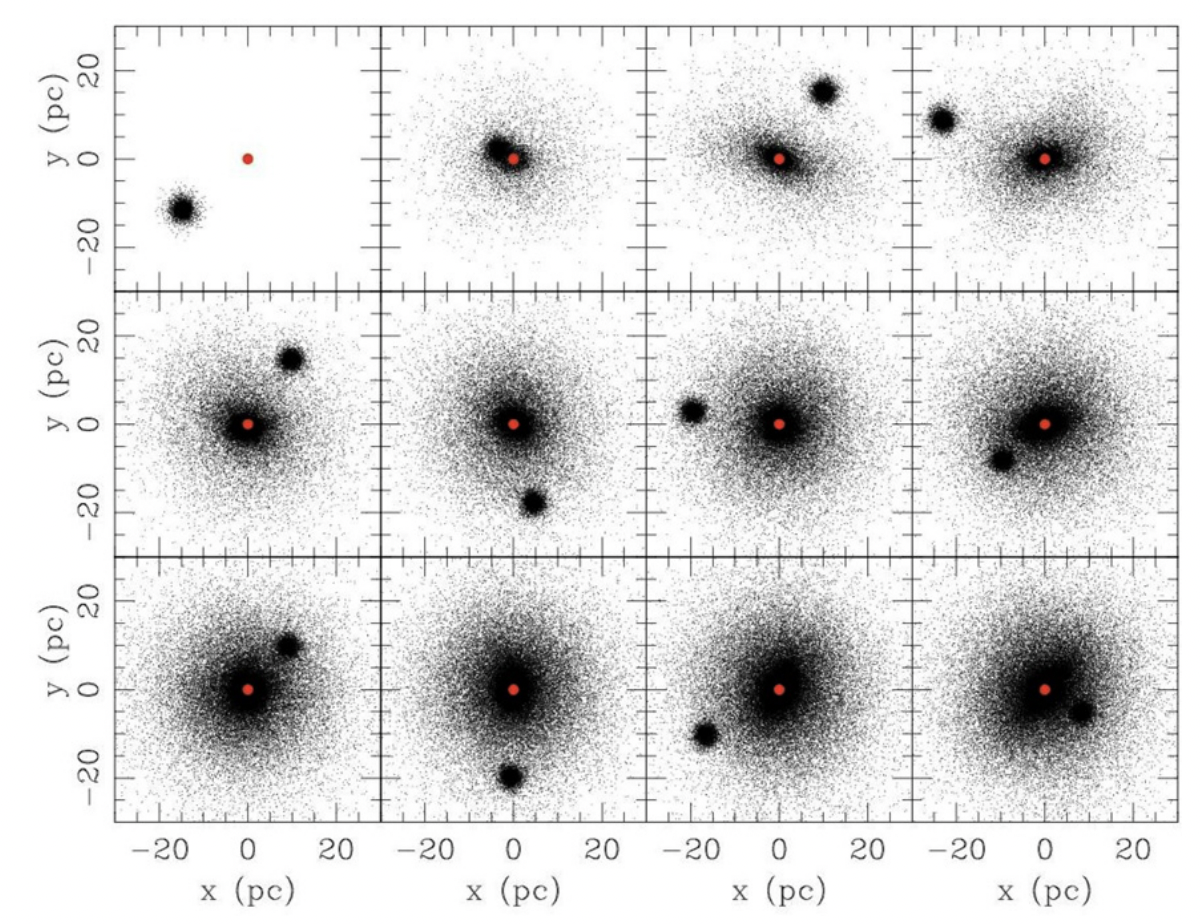
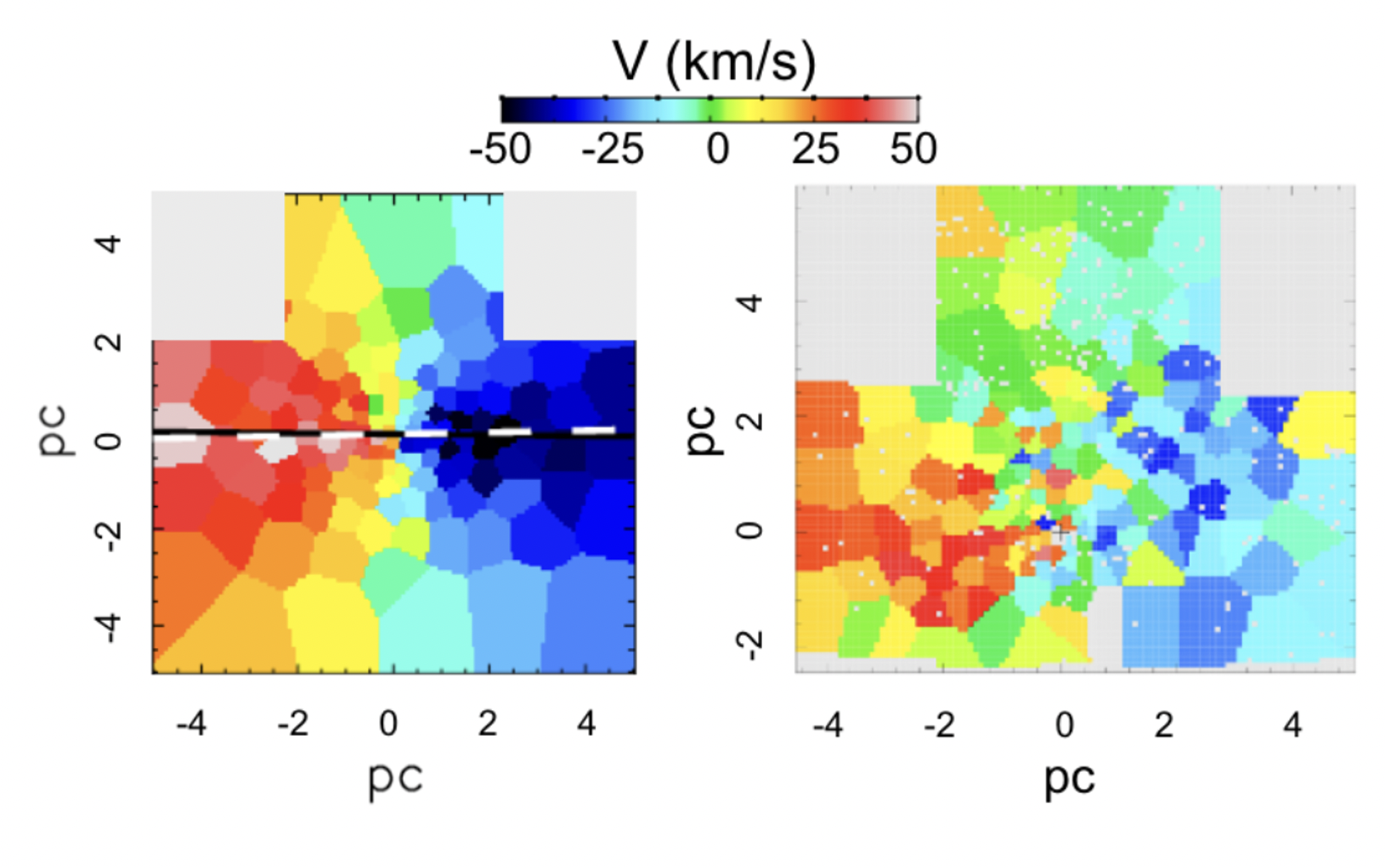
The origin of nuclear star clusters in the Galaxy and beyond
A large part of my work focusses on the understanding of the origin and evolution of nuclear star clusters (NSCs), dense stellar systems observed at the centre of most observed galaxies. My models of the formation of NSCs through the merger of GCs are considered state-of-the-art and have been shaped, updated and exploited within many collaborations, to explore open questions on the Galactic centre. Here are a couple of results obtained with co-supervised PhD students:
- The rotation of the Galactic nuclear cluster can be due to cluster mergers.
- Pulsars can be used to constrain how the Galactic nuclear cluster formed.
And here are some recent results (a couple more are here and here):


Finding clues of post galactic nuclei merger supermassive black hole binaries
Supermassive black hole binaries form when galaxies merge, but only a few candidates have been detected so far. With a set of N-body simulations of galactic nuclei mergers (run with nbody6++gpu), we found several signatures left by the presence of these binaries on the large-scale dynamical structure of the nuclear star cluster that embeds them. The observed shape and rotational features of the nuclear cluster that forms from the merger, as well as the detection of hypervelocity stars can tell us if a nucleated galaxy went through a recent major merger and uncover the presence of a supermassive black hole binary in a indirect way. This is very important because this kind of binaries are extremely difficult to be detected in a direct way and their existence have strong implications in the generation of gravitational waves detectable by the future Laser Interferometer Space Antenna (LISA). More details on our recently accepted MNRAS paper.
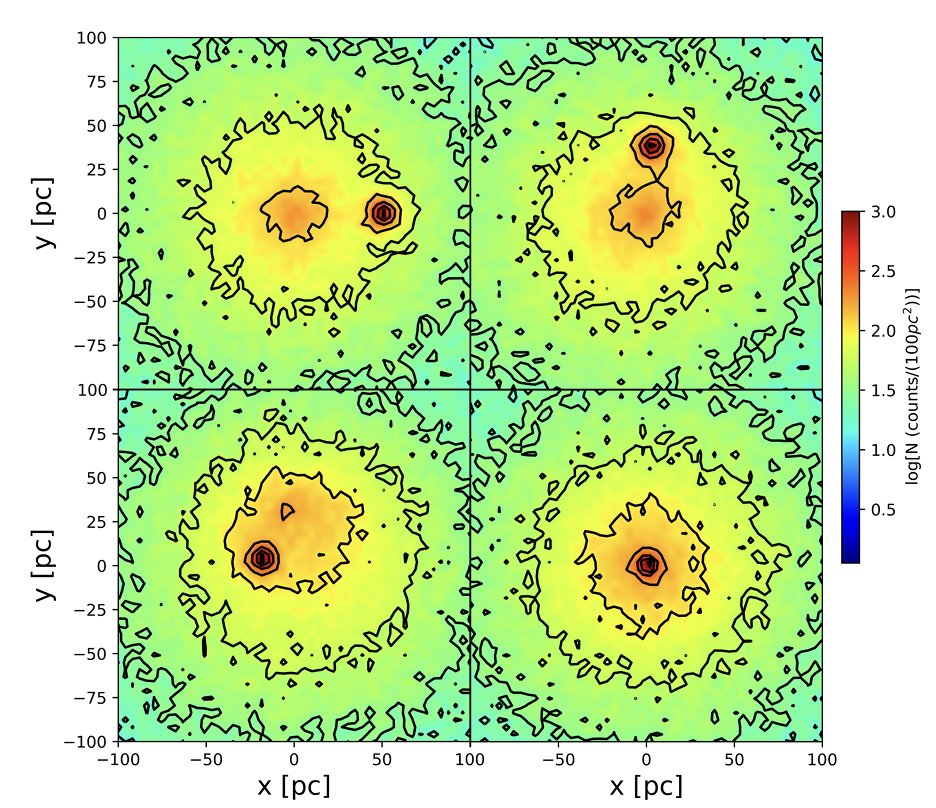

Nuclear star clusters as probes of dark matter haloes: the case of the Sagittarius dwarf spheroidal galaxy
In this paper, recently accepted for publication in MNRAS, we use M54, one of the most massive Galactic globular clusters to get insights on the shape of the dark matter profile of the Sgr dSph galaxy, its original host galaxy. Sgr dSph is currently being accreted and disrupted by the Milky Way and in this paper, we use direct N-body simulations to model the decay of an M54-like cluster at the centre of its host and compare its properties to those observed for M54. In this way, we found out that its dark matter should have been distributed in a shallow cusp or a core to reproduce the shape and kinematics observed for the old metal-poor population of M54. A special thanks goes to Robin Herlan, the first author of this work who did his bachelor's thesis with me and decided to bear with me through 3 international moves and 2 maternity leaves (even if he left the field) to finish this paper, just because it was fun. The paper is very well summarized in this cool and very well written astrobites post.

The formation of the Moon
I have worked on planetary dynamics, exploring the giant-impact scenario for the formation of the Moon providing a solution to the long-standing Moon-Earth composition similarity challenge for the giant-impact scenario. This result has been published on Nature. This work, which is the result of a collaboration that I led in France and Israel, has been followed by multiple (50+) press releases and a further lead author paper on MNRAS. I have been awarded four national prizes in acknowledgement of this breakthrough result.
Contact Me
Please feel free to reach out to me via email, I will be happy to get in touch!
Dipartimento di Fisica e Astronomia
Università degli Studi di Padova
Vicolo Osservatorio 3
I-35122, Padova, Italy

